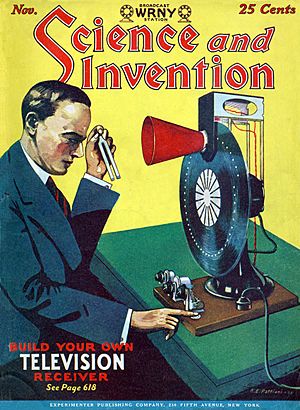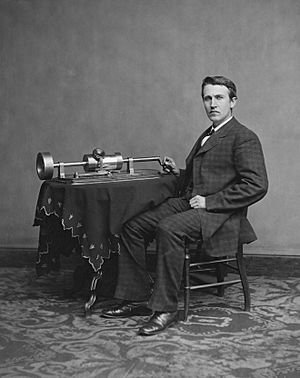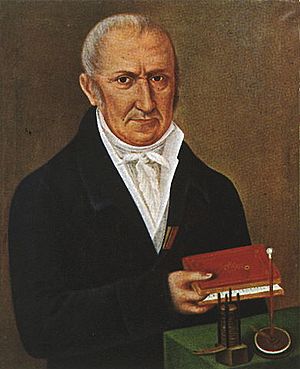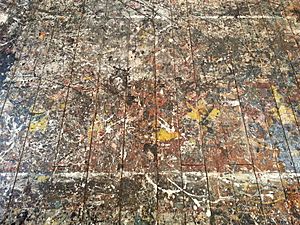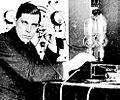Invention facts for kids
An invention is a brand new thing or idea that someone has created. When something is invented, it means it's made for the first time. Think about the computer or cars; they were once new inventions! People who create these new things are called inventors.
Sometimes, an invention can get a patent. A patent is like a legal shield. It protects the inventor's special idea. It also officially says that their new creation is truly an invention. Inventions help us learn more and do more. They push the limits of what humans can achieve.
Ideas themselves can also be inventions. For example, a writer might invent new characters. Then, they invent a whole story about them. Throughout history, people have invented many things. These inventions make our lives easier. This is why people say, "necessity is the mother of invention." It means new things are often created when there's a need for them.
How Inventions Are Made
The journey of an invention often starts with an idea. This idea might be drawn on paper or designed on a computer. Inventors might try different things until they find what works. This is called "trial and error". They might also build small models or do experiments. Sometimes, they test the invention in its full form. Brainstorming with others can also help create new ideas. Engineers, designers, and scientists often work together.
As an invention develops, the first idea might change a lot. It could become simpler or more useful. It might even turn into something completely different! Working on one invention can also lead to ideas for others.
It's not always quick or easy to turn an idea into a working device. Some inventions become even more useful over time. This happens as other changes occur in the world. For example, the parachute became much more important. This happened after powered flight became a reality.
Inventing is often a creative process. Inventors need to be open-minded and curious. This helps them see possibilities beyond what is already known. Seeing a new connection can spark an invention. Inventors often combine ideas from different areas. They might even ignore the usual boundaries between fields.
Playing can also lead to inventions. Childhood curiosity and imagination are important. Inventors enjoy playing with things that interest them. They love to explore. This natural drive helps them create new things.
Sometimes, ideas for inventions pop up unexpectedly. This can happen while daydreaming. It's especially true when your mind is relaxed. For example, J. K. Rowling, who wrote Harry Potter, got her idea on a train. Frank Hornby, who invented Meccano, also had his idea on a train journey.
To invent means to see things in a new way. Inventors often imagine their new idea in their mind. New ideas can come when you're not actively thinking about a problem. This might happen while relaxing or sleeping. A new idea might come in a flash, like a "Eureka!" moment. For instance, Albert Einstein suddenly found the solution to his theory of relativity in a dream. Inventions can also happen by accident. Polytetrafluoroethylene (Teflon) is an example of an accidental invention.
Inventing is often an exploration. The result is not always certain. There can be failures as well as successes. Inspiration starts the process. But inventions usually need a lot of development. Inventors might try to make something better. They might make it more effective, faster, or easier to use. They could also make it last longer, cost less, or be more eco-friendly.
Invention in the Arts
Invention has a long and important history in the arts. Creative thinking has always been key to the creative process in art. Here are some artistic inventions:
- Collage and construction, invented by Pablo Picasso.
- Readymade art, invented by Marcel Duchamp.
- Mobile sculptures, invented by Alexander Calder.
- Combine art, invented by Robert Rauschenberg.
- Shaped painting, invented by Frank Stella.
- The motion picture, which is often credited to Eadweard Muybridge.
Jackson Pollock invented a completely new way of painting. He created a new kind of abstract art. He did this by dripping, pouring, and splashing paint. He used un-stretched canvas lying on the floor.
New tools for artists also led to creative advances. Impressionist painting became possible because of new paint tubes. These tubes could be closed again and were easy to carry. This allowed artists to paint outdoors easily. Inventions that start as artwork can also find other uses. For example, Alexander Calder's mobile sculptures are now often used over babies' cribs.
Money from patents on art, design, and architecture can help create the invention. Frédéric Auguste Bartholdi's 1879 design patent for the Statue of Liberty helped fund the famous statue. This patent covered small copies of the statue, like souvenirs.
Images for kids
-
A rare 1884 photo. It shows an experiment to record voice patterns. This happened at the Alexander Graham Bell Laboratory. Many of their ideas didn't work out.
-
Eric M. C. Tigerstedt (1887–1925) was a pioneer of sound-on-film technology. This photo is from 1915.
-
Railways are one of the most important inventions in land transport. This is a railway station in Bratislava, Slovakia.
See also
 In Spanish: Invento para niños
In Spanish: Invento para niños


